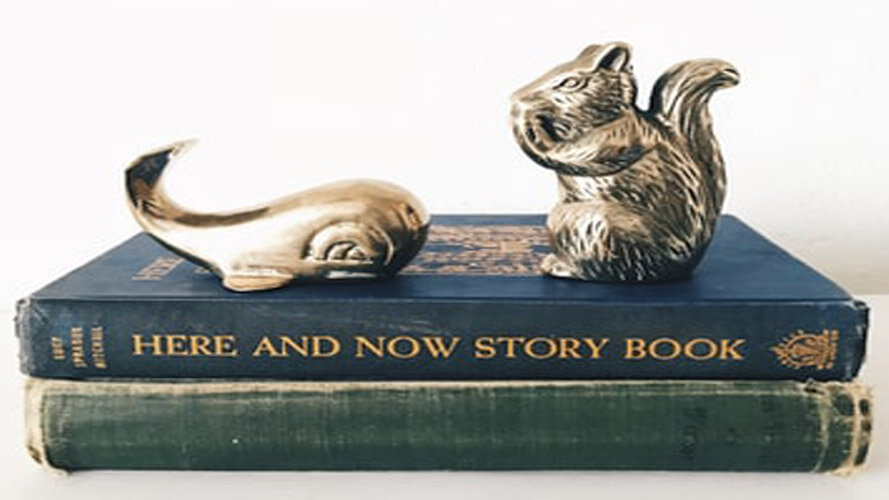CAN YOU HEAR YOUR ROLE CALL?
‘The future has already happened, it just isn’t well distributed.’ William Gibson.
‘Will you change it?’ coded message in the Torah.
Part 4 of 4. Myths and Archetypes
As we enter into the Age of Aquarius, as depicted in ‘The Grand Year,’ is it possible that we are teetering on the edge of a transition where only those who stop and pause can acknowledge the enormity of the change upon us? We are surfing the face of a wave at speed and there’s no mistaking the great drama unfolding before us, but because of our limited perspective, the meaning escapes us. When the drama is so multi-layered and the unfolding narrative being played out over several acts, only by looking at the bigger picture can we understand how the events in action could be part of a larger process.
As we find ourselves wandering across this great stage, we may begin to get an insight on how to fulfill our roles with authenticity. As the characters in our play gradually reveal themselves and the plot begins to become less ambiguous, we can also become aware of our ability to not only act, but to also direct our own part in what the mythologists may call with the story of Prometheus, the Christians may believe is Christ’s second coming and the Maya may call the Fifth Sun.
You are an integral part of the creative expression of the unfolding experience. You begin to define your story and as your images unfold they become part of a jigsaw that allows a myriad of different interpretations on a theme, and herein lies the beauty of myth. We create our realities individually and collectively, and we identify with the characters and storyline through our ability to access the collective psyche, which doesn’t reply with the Queen’s English, but in symbolism and an ability to mentally swim in a river that has no set time.
For example, the story of Moby Dick, where Ahab slayed the sea creature, may be interpreted literally as a simple tale of man’s struggle with a large sea creature and Jonah being saved from the whale’s belly or it could lend itself to the Hindu interpretation that points towards the great shift from the Piscean age (sea creature) and entrance into Aquarius, where humans are ‘rescued’ by their ability to overcome their base instincts. Is it possible that the whale could represent our collective unconscious, the great, global iCloud that renders us responsible for our every thought, feeling and action? If so, it is imperative that we move towards accepting this without guilt, anger or shame, to be able to move forward and play the game with our eyes open this time.
We have played our roles to a tee, but it is only now, with increased understanding that we are aware of how our consciousness has evolved, and this is what separates us from animals. We have played characters on a stage set, directed by our collective unconscious and our beliefs have played an integral part in this process, as Carl Jung comments, ‘Christianity had come to stay because it fits in with our archetypal pattern’ and “the unconscious no sooner touches us than we are it, we become unconscious of ourselves.’ (Jung, 2007: p 14) Richard Tarnas in his book ‘Passion of the Western Mind’ hints on how ‘archetypal patterns, which have been misused as forms of oppression and dictatorship, will not be viable as technical innovations increase our communication with each other and education and science and philosophy provide us with a greater awareness of the world around us.’
Myths and archetypes in the form of verbal narratives in terms of communal life, symbolic rites, ceremonies and festivals may cease to exist in this fashion, but more importantly they could also cease to exist as a control system, as we begin to see through the metaphors. The artist, in its many forms, usually the forerunner in terms of intuition and interpretation of symbolism, could bring transparency to the social mask, more so than any fanatic idealist. It is highly unlikely that the future of mythology will be a new singular, uniform structure. Just as the Sumerians took the decisive, enormous leap out of the confines of local tribal folklore in 4th century B.C. and into a mathematical cosmic order, we are on edge of repeating this process and our ‘flood’ will be awareness and knowledge.
The next psychic analogy belongs to Atlantis and Prometheus. We no longer need to ‘live in an illusion and hide away our divine nature from ourselves,’ It’s time to open our ears to the birdsong and find our own calling. Like Hamlet, we have been feigning stupidity for a long time, and as we slowly begin to access our unconscious, maybe initially through our dreams and recognition of synchronicities, we can start to bring a little light and strength into the ‘blind rat mole’ game we have played so well. If life and intelligence is interwoven in everything and our perception is part of our reality, as we override our animal natures and change our perceptions, the ripple effect could be contagious.
Our myths and archetypes will become more relevant to us in a different way, as we have a greater understanding of what a Kalahari bushman described as ‘The dream dreaming us.’ They will allow us to be more self-aware and to take responsibility for our motives and actions, and it is with this awareness we can transition away from serving an exhausted ideal that no longer serves us, and that calls for the greatest awareness of all.
Bibliography
CAMPBELL, J. (1986). The inner reaches of outer space: Metaphor as myth and as religion - Joseph Campbell. United States: HarperCollins Publishers
CULTURE 24, (2017) Mythologies - Catrin Howell At The Glynn Vivian Swansea [Online] Available at: .http://www.culture24.org.uk/art/ceramics-and-craft/art38677 [Accessed 9 May 2017].
CRYSTALINKS, (2017). Precession of the Equinoxes - Age of Aquarius. [Online] Available at: http://www.crystalinks.com/precession.html [Accessed 9 May 2017].
DAWKINS, R. (1989). The selfish gene. New York: Oxford University Press.
THE GUARDIAN (2017) Damien Hirst: Treasures from the Wreck of the Unbelievable review- a titanic return. [Online] Available at: http//www.guardian.com/artand design/2017/apr/06/damien-hirst-guardian.com/artanddesign/2017/apr/06/damien-hirst-treasures-from-the wreck-of-the-unbelievable-review-titanic-return [Accessed: 9th May 2017]
HOWELL, C [2005] Gallery [Online] Available at:catrinhowell.com/gallery01.html [Accessed 5th July 2017]
JUNG, C. (1999) The Archetypes and the Collective Unconscious. Third ed. Princeton, New Jersey: Princeton University Press.
JUNG, C. (1959). Flying saucers. A modern myth of things seen in the skies. 1st ed. Princeton, New Jersey: Princeton University Press.
MAIL ONLINE (2017) Could this £50 million fake shipwreck be the downfall of Damien?[Online] Available at: http//www.dailymail.co.uk/femail/article-4394204/could-50m-shipwreck-downfall-Damien-Hirst.html [Accessed: 16th May 2017]
MC TAGGART, L and TALBOT, M. (2011). The holographic universe: The revolutionary theory of reality. New York, NY: HarperCollins Publishers.
O’ LEARY, D. and BEAUREGARD, M. (2008). The spiritual brain: A neuroscientist's case for the existence of the soul. New York: HarperCollins Publishers.
OTHER CRITERIA (2017). Damien Hirst – Myth and Legend – Sculptures. [Online] Available at: https://othercriteria.com/uk/artwork/damien-hirst-myth-and-legend [Accessed 9 May 2017].
OXFORD DICTIONARY (2017). Oxford Living Dictionaries. [Online] Available at: https://enoxforddictionaries.com [ Accessed: 9th July 2017]
SUNKEN HUNDRED (2017). The Myth. [Online] Available at: http://www.sunkenhundred.nyc/about-1/ [Accessed 9 May 2017].
TARNAS, R. (1996). The passion of the western mind: Understanding the ideas that have shaped our world view. London: Pimlico.
TESLA QUOTE (2005) Tesla Universe[Online] Available at https//teslauniverse/com/nikola-tesla/quotes [Accessed 5th July 2017]
VERGETTE, M. ( 2017) Timeandtidebell.co.uk.[Online] Available at: http://www.timeandtidebell.co.uk/ [Accessed 9 May 2017].
VON DECHEND, H. and DE SANTILLANA, G. (1977). Hamlet's mill: An essay investigating the origins of human knowledge and its transmission through myth. 2nd ed. Boston: David R. Godine Publisher.

